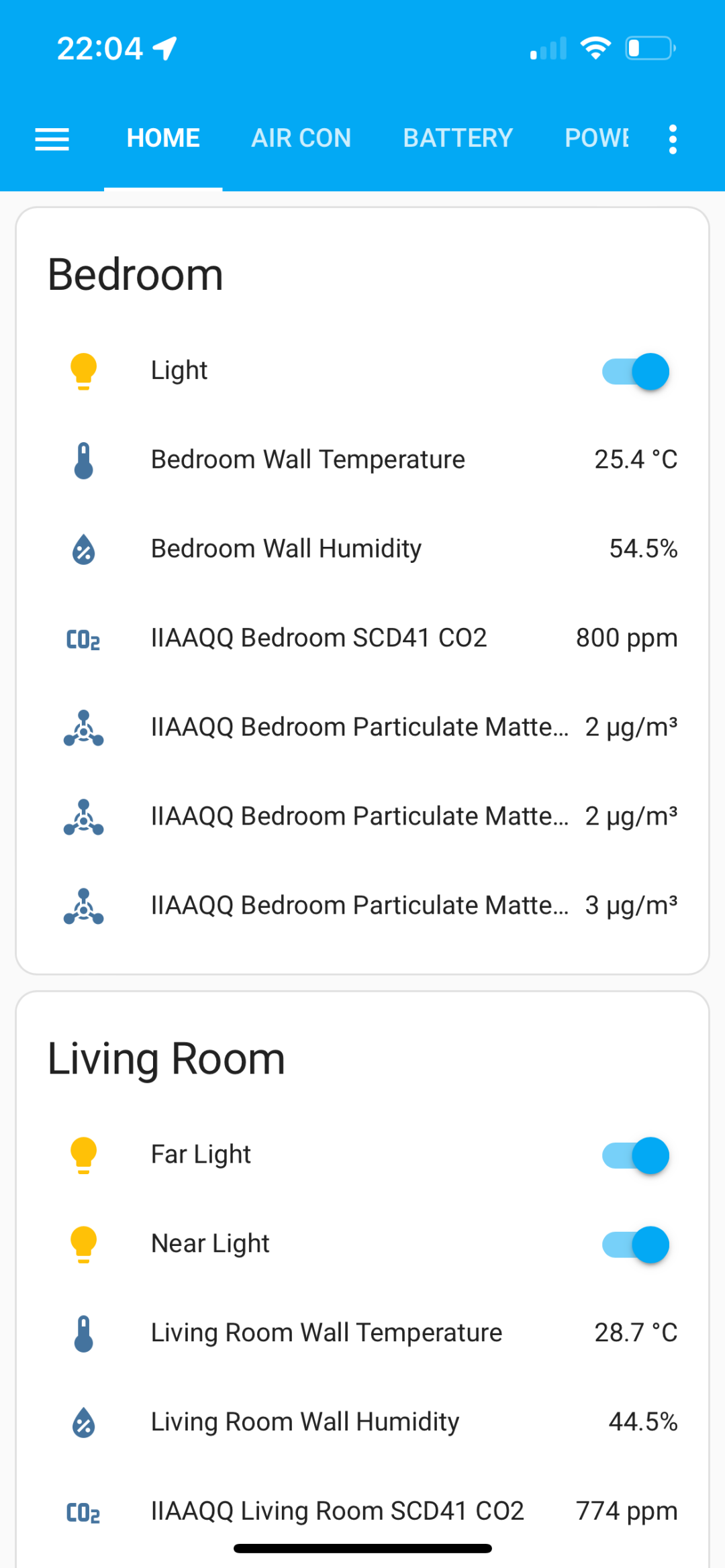看完这篇,你也能做 AI 搜索:论「结构化输出」
随着AI技术的不断进步,结构化输出的应用将越来越广泛,从AI搜索到IoT设备适配,再到复杂的对话系统,结构化输出都扮演着至关重要的角色。了解和掌握结构化输出的使用方法,对于AI行业的从业者来说,是提升产品性能和用户体验的关键。

先说结论:结构化输出,是绝大多数 AI 产品和 Agent 的核心
无论是 AI 搜索、有记忆的 bot,还是各类 agent,都是基于结构化输出搭建的。
在这篇文章里,我讲从多角度讲一下结构化输出的用途、起源和示例。
同时,文章会附带一些代码片段,方便更直观的表现(当然,完全不看关系也没问题)
一、什么是「格式化输出」
如果我问 GPT:介绍一下乔布斯
通常会收到这样的回复:
史蒂夫·乔布斯,1955年2月24日出生,2011年10月5日去世,美国人。他活跃于科技、创新、企业管理和动画领域。乔布斯创立了Apple、NeXT和Pixar公司,推出了Mac、iPod、iPhone等具有划时代意义的产品,重塑了个人电脑、音乐和手机行业,奠定了苹果在全球科技领域的领军地位。作为Pixar的创办人之一,他也在动画领域留下了深远的影响。乔布斯是20世纪末至21世纪初最具影响力的企业家和创新者之一。
而在很多 AI 产品中,我们并非看到一串文字,而是这样的脑图:

其背后,就是结构化输出 – 让 AI 输出 json,而非文本,比如:
{
“name”: “史蒂夫·乔布斯”,
“birth_date”: “1955-02-24”,
“death_date”: “2011-10-05”,
“nationality”: “美国”,
“fields”: [“科技”, “创新”, “企业管理”, “动画”],
“companies_founded”: [“Apple”, “NeXT”, “Pixar”],
“achievements”: [
“创立苹果公司”,
“推出Mac、iPod、iPhone等产品”,
“重塑个人电脑、音乐、手机行业”,
“奠定苹果全球科技领军地位”,
“Pixar创办人之一”
],
“influence”: “20世纪末至21世纪初最具影响力的企业家和创新者之一”
}
二、产品的背后,都是结构化输出
依然拿「介绍一下乔布斯」这个问题举例,在不同 AI 产品中,这个问题的内部输出是不同的。
如果是搜索,它的内部输出可能是这样:
{
“query”: “乔布斯”,
“search_by”: “Google”
}
获得这个结果后,再用谷歌搜索「乔布斯」,并将结果通过 AI 总结,返回给用户。

对于 Rag 工具,其数据库为《硅谷县志》,它的内部输出可能是这样
{
“rag1”: “乔布斯的家庭”,
“rag2”: “乔布斯的成长”,
“rag3”: “乔布斯的产品”,
“rag4”: “乔布斯的成就”,
}
分别对这几个信息进行 rag 后,在把结果汇总,通过 AI 总结,返回给用户。

对于四格漫画,其内部输出可能是这样的:
{
“stories”: [
{
“story”: “乔布斯的家庭”,
“prompt”: “20世纪70年代复古风格,温暖的色调,柔和的线条。在美国加州的一间温馨家庭住宅,窗外阳光明媚,庭院中充满绿植和鲜花。年轻的乔布斯与他的养父母在客厅里,其母亲在织毛衣,父亲在看报纸,乔布斯坐在地上玩着一台老式计算机。画面呈现出和谐温馨的家庭场景,浓厚的亲情氛围中,乔布斯的眼中充满了好奇与探索。”,
“caption”: “家庭的力量塑造了伟大的梦想”},
{
“story”: “乔布斯的成长”,
“prompt”: “1970年代末期的黑白摄影风格,带有强烈的对比效果。在旧金山一所简朴的高中教室,光线从窗外斜射进来,课桌上摆满了书本和笔记。年轻的乔布斯坐在教室后排,注视着老师手中的物理实验,身边的同学们都在认真听课。画面体现了乔布斯对知识的渴望,眼神专注,透出不凡的好奇心和思考的深度。”,
“caption”: “追求知识与个人成长”},
{
“story”: “乔布斯的产品”,
“prompt”: “极简主义风格,采用现代化的色彩搭配,注重设计感。在苹果公司现代化的办公室内,简洁的玻璃桌面上摆放着第一代Macintosh,背景是白色的墙壁和大型苹果标志。乔布斯站在桌前,手指轻触Macintosh,身后几位工程师在讨论。画面重点突出乔布斯与他的产品,展示出科技与设计的完美结合,乔布斯的神态自信且充满远见。”,
“caption”: “通过产品改变世界”},
{
“story”: “乔布斯的成就”,
“prompt”: “超现实主义风格,带有未来感,色彩鲜明且具有冲击力。在庞大的苹果公司总部前,未来风格的天空中悬浮着乔布斯的头像,周围环绕着iPhone、iPad、Mac等产品。乔布斯的巨大肖像与天空中的科技产品融为一体,象征着他对现代科技的深远影响。画面展现了一幅震撼的图景,乔布斯的形象如同神话般屹立在现代科技的顶峰。”,
“caption”: “达到科技的巅峰”
}
]}
然后分别对这几个信息,进行画图,在展示给用户。

三、以「AI 天气预报」为例
现在换个例子:我有一个天气预报 AI,如果用户问到了天气,则进行告知。
实际上,这个 AI 并不是真的用 AI 去实时预测,而是问题,转化成一个请求,去查询「天气预报数据库」,再返回给用户(当然,如果用户的问题和天气无关,则正常回答)。
具体的流程如下:

从程序的角度,执行以下:
1)通过结构化输出,判断该问题和天气有关,并拆解出 location 和 date 两个字段分别是 北京 和 明天
2)向接口请求信息 北京 和 明天 (严谨来说是,Beijing 和 2024-08-16)
3)AI 进行结构化返回:
{
“date”: “2024-08-16”,
“location”: “北京”,
“temperature”:
{
“high”: “32°C”,
“low”: “24°C”
},
“weather”: “雷阵雨,云层厚”,
“humidity”: “77%”,
“UV_index”: “高”,
“advice”: “携带雨具,注意防晒”
}
4)向接口发送类似下面的信息
client.chat.completions.create(
model=”gpt-4o”,
messages=[
{“role”: “system”, “content”: “你是天气预报机器人,今天是 2024-08-16”},
{“role”: “user”, “content”: “””
{“date”: “2024-08-16″,”location”: “北京”,”temperature”: {“high”: “32°C”,”low”: “24°C”},”weather”: “雷阵雨,云层厚”,”humidity”: “77%”,”UV_index”: “高”,”advice”: “携带雨具,注意防晒”}
北京明天的天气怎么样?
“””}
]
)
5)接口返回的结果,会类似:
明天北京的天气预报显示白天的气温将达到最高约32°C,夜间最低温度约为24°C。预计会有雷阵雨,全天云层较厚,湿度较高,达到77%左右。雷阵雨可能会在上午和下午出现,因此出行时建议携带雨具,并注意防晒,因为紫外线指数较高。总的来说,天气闷热,空气湿润,体感温度可能会比实际温度更高
也可以利用「结构化输出」,对设备进行 IoT 适配。
比如,我学过电工(EE),就可以让 Coze 变成一个家庭中控,如:
家里的数据:

封装成 Coze Bot:

四、产业演化史
在 AI 领域,我们通常认为,结构化输出的第一次大规模使用,是源自去年 5 月 OpenAI 的 Plugin 正式上线:AI 可以通过结构化输出,来调用外部工具。
并且,截止到当前,OpenAI 在结构化输出这块,供进行了 4 次迭代,包括 Plugin 方法,Function Calling,Json Mode 和前两天新出的 Structured Outputs。
当然了,你也可以用 markdown 等 prompt 方法来模拟结构化输出,但不在本次的讨论范围。
Plugin 方法
在 2023 年 3 月,当时参与到 plugin 内测的朋友,会看到一份如何让 ChatGPT 调用外部工具的文档,也是结构化输出的雏形。
流程就和上文一样,ChatGPT 在获知用户的请求后,通过结构化输出的方式,生成包括插件选择在内的一个 json,插件在接受到这些参数后开始处理,并给到一个回调。之后这套东西,变成了 GPTs 的 Action。
注意:这套方法并未通过接口的方式发布

Function Calling
在 2023 年 6 月,OpenAI 带来了 0613 年中更新,并发布了 Function Calling,也是现在看来最广泛使用的调用方法,国内模型普遍支持。
下面,我们以一个更直观的例子,来看看 Function Calling 的使用过程。以 用户查询包裹 为例,这个 bot 处理任务的过程中,总计分 2 步:
1)用户向 AI 询问【我的包裹,编号12345,寄了吗?】的时候,其请求额外带上字段 tools,在其中定义要获取的信息 order_id
2)假设获取到的信息是 order_12345 ,通过查询数据库,获得包裹信息 2024-08-01
3)将这个信息,和历史提问合并,再交给大模型,获得最终输出 包裹在 2024-08-01 的时候已经寄出去了
如果用代码的方式,就是:
tools = [
{
“type”: “function”,
“function”: {
“name”: “get_delivery_date”,
“description”: “Get the delivery date for a customer’s order. Call this whenever you need to know the delivery date, for example when a customer asks ‘Where is my package'”,
“parameters”: {
“type”: “object”,
“properties”: {
“order_id”: {
“type”: “string”,
“description”: “The customer’s order ID.”
}
},
“required”: [“order_id”],
“additionalProperties”: False
}
}
}
]messages = []
messages.append({“role”: “system”, “content”: “You are a helpful customer support assistant. Use the supplied tools to assist the user.”})
messages.append({“role”: “user”, “content”: “Hi, can you tell me the delivery date for my order?”})
messages.append({“role”: “assistant”, “content”: “Hi there! I can help with that. Can you please provide your order ID?”})
messages.append({“role”: “user”, “content”: “i think it is order_12345”})rsp = client.chat.completions.create(
model=’gpt-4o’,
messages=messages,
tools=tools
)
之后,AI 会返回类似:
ChatCompletion(id=’chatcmpl-9wY3ulTLZswqZLF58L0LQ0sM1EAsG’, choices=[Choice(finish_reason=’tool_calls’, index=0, logprobs=None, message=ChatCompletionMessage(content=None, refusal=None, role=’assistant’, function_call=None, tool_calls=[ChatCompletionMessageToolCall(id=’call_W1KzfgxvkoxjCAGT3Td9oVPk’, function=Function(arguments='{“order_id”:”order_12345″}’, name=’get_delivery_date’), type=’function’)]))], created=1723740986, model=’gpt-4o-2024-05-13′, object=’chat.completion’, service_tier=None, system_fingerprint=’fp_3aa7262c27′, usage=CompletionUsage(completion_tokens=19, prompt_tokens=140, total_tokens=159))
其中 response.choices[0].message.tool_calls[0].function.arguments 的值,就是 {“order_id”:”order_12345″}
假定查询到的结果是 2024-08-01
# Prepare the chat completion call payload
completion_payload = {
“model”: “gpt-4o”,
“messages”: [
{“role”: “system”, “content”: “You are a helpful customer support assistant. Use the supplied tools to assist the user.”},
{“role”: “user”, “content”: “Hi, can you tell me the delivery date for my order?”},
{“role”: “assistant”, “content”: “Hi there! I can help with that. Can you please provide your order ID?”},
{“role”: “user”, “content”: “i think it is order_12345”},
rsp.choices[0].message,
{“role”: “tool”, “content”: “delivery_date:2024-08-01”, “tool_call_id”: rsp.choices[0].message.tool_calls[0].id},
]
}# Call the OpenAI API’s chat completions endpoint to send the tool call result back to the model
response = client.chat.completions.create(
model=completion_payload[“model”],
messages=completion_payload[“messages”],
)# Print the response from the API. In this case it will typically contain a message such as “The delivery date for your order #12345 is xyz. Is there anything else I can help you with?”
print(response)
最终,你会得到
ChatCompletion(id=’chatcmpl-9wYV7Yhkimzlpg3ejNkjRjI0GKqyw’, choices=[Choice(finish_reason=’stop’, index=0, logprobs=None, message=ChatCompletionMessage(content=’Your order with ID “order_12345” is scheduled to be delivered on August 1, 2024. If you have any other questions or need further assistance, feel free to ask!’, refusal=None, role=’assistant’, function_call=None, tool_calls=None))], created=1723742673, model=’gpt-4o-2024-05-13′, object=’chat.completion’, service_tier=None, system_fingerprint=’fp_3aa7262c27′, usage=CompletionUsage(completion_tokens=40, prompt_tokens=111, total_tokens=151))
也就是 包裹在 2024-08-01 的时候已经寄出去了
回顾一下
上面完成这个对话的时候,用户给出了一次 prompt: i think it is order_12345,但 AI 实际上是跑了 2 次:
第一次是获取 order id
第二次才是真正是生成内容 包裹在 2024-08-01 的时候已经寄出去了
同时,在第二次的对话中,结尾挂着 第一次的 response 和 数据库查找结果。
在数据库的查询结果中,role 为 tool
还需注意
如果你在某些代码中,看到 Function Calling 的查询信息,不是用 tool,而是用 function,这也没错。
因为 OpenAI 曾经改过 Function Calling 的接口实现:最开始是 function 结构,后面改成了 tool 结构。对于 tool 和 function 这两种写法,目前都行,但后续 OpenAI 将只支持 tool 结构
吐槽:我个人更喜欢 function 结构,更优雅
使用 tool 结构”messages”:
“messages”: [
{“role”: “system”, “content”: “You are a helpful customer support assistant. Use the supplied tools to assist the user.”},
{“role”: “user”, “content”: “Hi, can you tell me the delivery date for my order?”},
{“role”: “assistant”, “content”: “Hi there! I can help with that. Can you please provide your order ID?”},
{“role”: “user”, “content”: “i think it is order_12345”},
rsp.choices[0].message,
{“role”: “tool”, “content”: “delivery_date:2024-08-01”, “tool_call_id”: rsp.choices[0].message.tool_calls[0].id}]使用 function 结构
“messages”: [
{“role”: “system”, “content”: “You are a helpful customer support assistant. Use the supplied tools to assist the user.”},{“role”: “user”, “content”: “Hi, can you tell me the delivery date for my order?”},
{“role”: “assistant”, “content”: “Hi there! I can help with that. Can you please provide your order ID?”},
{“role”: “user”, “content”: “i think it is order_12345”},
{“role”: “function”, “content”: “delivery_date:2024-08-01”, “name”: “delevery_record”}]
使用 function 结构
“messages”:[
{“role”: “system”, “content”: “You are a helpful customer support assistant. Use the supplied tools to assist the user.”},
{“role”: “user”, “content”: “Hi, can you tell me the delivery date for my order?”},
{“role”: “assistant”, “content”: “Hi there! I can help with that. Can you please provide your order ID?”},
{“role”: “user”, “content”: “i think it is order_12345”},
{“role”: “function”, “content”: “delivery_date:2024-08-01”, “name”: “delevery_record”}
]
使用 function 结构
“messages”: [
{“role”: “system”, “content”: “You are a helpful customer support assistant. Use the supplied tools to assist the user.”},
{“role”: “user”, “content”: “Hi, can you tell me the delivery date for my order?”},
{“role”: “assistant”, “content”: “Hi there! I can help with that. Can you please provide your order ID?”},
{“role”: “user”, “content”: “i think it is order_12345”},
{“role”: “function”, “content”: “delivery_date:2024-08-01”, “name”: “delevery_record”}]
另外:也可以两种结构都不用
“messages”: [
{“role”: “system”, “content”: “You are a helpful customer support assistant. Use the supplied tools to assist the user.”},
{“role”: “user”, “content”: “Hi, can you tell me the delivery date for my order?”},
{“role”: “assistant”, “content”: “Hi there! I can help with that. Can you please provide your order ID?”},
{“role”: “user”, “content”: “i think it is order_12345. Related record is: delivery_date:2024-08-01”}]
Json Mode
在 2023 年 11 月,OpenAI 在开发者大会上,带来了 Json Mode 更新。
仔细看上面的 Function Calling,其参数是通过 string 给到的,不够稳定。Json Mode 便是为了解决这一问题:直接输出 Json。
注意:这种方法仍然不够稳定,并已被 Structured Outputs 取代
调用的时候,要求:
- prompt 里出现 json 这个单词
- response_format 设置为 “type”: “json_object”
比如
completion_payload = {
‘model’: ‘gpt-3.5-turbo’,
‘messages’: [{‘role’: ‘user’, ‘content’: ‘告诉我四大名著分别是什么,以及他们的作者是谁,按这个 json 格式: {{‘书名’:’xxx’,’作者’:’xxx’}…}’}],
‘response_format’: {‘type’: ‘json_object’}
}# Call the OpenAI API’s chat completions endpoint to send the tool call result back to the model
response = client.chat.completions.create(
model=completion_payload[“model”],
messages=completion_payload[“messages”],
)
得到 resoponse 为Chat
Completion(id=’chatcmpl-9wZ5DHWicaarxccmTBGi8MfJsa6AQ’, choices=[Choice(finish_reason=’stop’, index=0, logprobs=None, message=ChatCompletionMessage(content=”{n {‘书名’: ‘西游记’, ‘作者’: ‘吴承恩’},n {‘书名’: ‘红楼梦’, ‘作者’: ‘曹雪芹’},n {‘书名’: ‘水浒传’, ‘作者’: ‘施耐庵’},n {‘书名’: ‘三国演义’, ‘作者’: ‘罗贯中’}n}”, refusal=None, role=’assistant’, function_call=None, tool_calls=None))], created=1723744911, model=’gpt-3.5-turbo-0125′, object=’chat.completion’, service_tier=None, system_fingerprint=None, usage=CompletionUsage(completion_tokens=92, prompt_tokens=57, total_tokens=149))
其中,通过 response.choices[0].message.content 可去到 json 信息,如需进行后续处理,依然沿用 function calling 中的方法
Structured Outputs
较之 Function Calling 和 Json Mode,Structured OutPuts 明显好用了很多,当前支持以下模型:gpt-4o-mini, gpt-4o-2024-08-06,当然,也包括之后的模型。
简单调试测试一下
刚才的四大名著的例子,代码这么写
from pydantic import BaseModel
class theBook(BaseModel):
name: str
writer: strclass theFour(BaseModel):
steps: list[theBook]completion = client.beta.chat.completions.parse(
model=”gpt-4o-2024-08-06″,
messages=[
{“role”: “system”, “content”: “Extract the event information.”},
{“role”: “user”, “content”: “告诉我四大名著分别是什么,以及他们的作者是谁”},
],
response_format = theFour,
)response = completion.choices[0].message.parsed
得到的结果是
theFour
(
steps=[
theBook(name=’《红楼梦》’, writer=’曹雪芹’),
theBook(name=’《西游记》’, writer=’吴承恩’),
theBook(name=’《三国演义》’, writer=’罗贯中’),
theBook(name=’《水浒传》’, writer=’施耐庵’)])
非常好用!
通过这种方法,还可以完成单次对话的 CoT,比如:
from pydantic import BaseModel
class Step(BaseModel):
explanation: str
output: strclass MathReasoning(BaseModel):
steps: list[Step]
final_answer: strcompletion = client.beta.chat.completions.parse(
model=”gpt-4o-2024-08-06″,
messages=[
{“role”: “system”, “content”: “You are a helpful math tutor. Guide the user through the solution step by step.”},
{“role”: “user”, “content”: “how can I solve 8x + 7 = -23”} ], response_format=MathReasoning,)math_reasoning = completion.choices[0].message.parsed
得到结果
{
“steps”: [
{
“explanation”: “Start with the equation 8x + 7 = -23.”, “output”: “8x + 7 = -23”
},
{
“explanation”: “Subtract 7 from both sides to isolate the term with the variable.”, “output”: “8x = -23 – 7”
},
{
“explanation”: “Simplify the right side of the equation.”, “output”: “8x = -30”},
{
“explanation”: “Divide both sides by 8 to solve for x.”, “output”: “x = -30 / 8”
},
{
“explanation”: “Simplify the fraction.”, “output”: “x = -15 / 4”
} ],
“final_answer”: “x = -15 / 4”
}
结语
以上差不多就是就是关于「结构化输出」的大致内容。以及…
最近我在写一个「AI 行业」的知识库,会有很多类似本篇的信息,完全面向从业者的。
等搞得差不多了,请大家来看~拜了个拜~
本文由人人都是产品经理作者【赛博禅心】,微信公众号:【赛博禅心】,原创/授权 发布于人人都是产品经理,未经许可,禁止转载。
题图来自Unsplash,基于 CC0 协议。


 起点课堂会员权益
起点课堂会员权益







想知道这种方式和人工引导让其按某种格式(先行定义)输出有什么不同吗?因为通过自然语言似乎也可以做到让输出结构化。